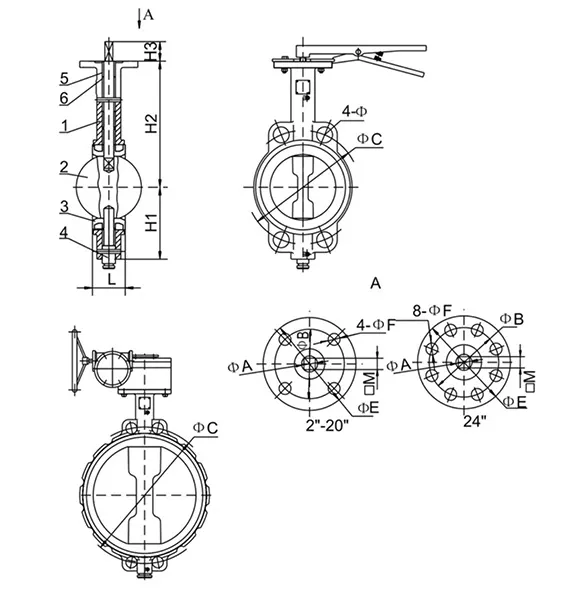ਨਵੰ. . 12, 2024 08:12 Back to list
rubber expansion joint flange type
Understanding Rubber Expansion Joint Flange Types
Rubber expansion joints are essential components in various piping systems, designed to absorb movements caused by thermal expansion, vibrations, and noise. The flange type is a crucial aspect of these joints, influencing their performance and application. In this article, we will explore the features, benefits, and considerations regarding rubber expansion joint flange types.
What are Rubber Expansion Joints?
Rubber expansion joints, also known as flexible rubber connectors, are engineered to accommodate movement and reduce stress within piping systems. They typically consist of a rubber body, which is reinforced with fabric or steel and equipped with flanged ends. The flexible nature of the rubber allows for axial, lateral, and angular deflections, making them ideal for piping systems subjected to temperature fluctuations and mechanical vibrations.
Types of Flanges
When referring to rubber expansion joints, the term flange type pertains to the design and format of the flanges attached to the joints. The most common types of flanges associated with rubber expansion joints include
1. Square Flanges These flanges have a squared-off shape and are often used in applications where space is limited. They provide a sturdy and reliable connection point, ideal for installations that demand compact design.
2. Round Flanges Round flanges are the most widely used type in the industry. They provide even pressure distribution and are compatible with various piping standards, making them a versatile choice for many applications.
3. Slip-on Flanges Designed to slip over the end of a pipe, these flanges are welded into place. They are easy to install and are suitable for low-pressure applications.
4. Weld Neck Flanges These flanges are designed with a neck that is welded to the pipe. They help maintain better alignment and are suitable for high-pressure systems.
5. Blind Flanges Used to close off the end of a piping system, blind flanges offer a secure seal and are often used for maintenance purposes.
Benefits of Using Rubber Expansion Joints with Flanges
rubber expansion joint flange type

1. Flexibility The primary benefit of rubber expansion joints is their ability to absorb vibrations and accommodate movements. The flanged design enhances this capability, allowing for increased flexibility within the piping system.
2. Noise Reduction Rubber materials inherently dampen sound. By integrating flanged rubber expansion joints into a system, operators can significantly reduce noise levels, creating a more pleasant working environment.
3. Ease of Installation Flanged connections are straightforward to install and remove compared to welded joints. This ease of installation translates into lower labor costs and minimizes downtime during repairs or replacements.
4. Corrosion Resistance Selecting the right rubber material can enhance the longevity of the expansion joint, especially in corrosive environments. Flanges can also be treated or coated for additional protection, extending the service life of the joint.
5. Cost-Effectiveness Rubber expansion joints generally offer a cost-effective solution for managing movement and stress in piping systems, especially when compared to more rigid alternatives.
Considerations When Choosing Flange Types
When selecting a rubber expansion joint with the appropriate flange type, several factors should be considered
- Pressure and Temperature Ratings Ensure that the chosen joint can withstand the operational pressures and temperatures of the system. - Pipe Material and Size Compatibility with the existing piping material and size is essential to ensure a proper fit.
- Application Environment Assessing the chemical and environmental conditions can help in choosing the right rubber material and flange design.
- Standards Compliance Check if the flanges meet industry standards for the specific application to guarantee safety and reliability.
Conclusion
Rubber expansion joint flange types play a critical role in the efficiency and durability of piping systems. Understanding their various forms and characteristics allows engineers and operators to make informed decisions, enhancing the performance of their systems while ensuring longevity and reliability.
Share
-
Reliable Wafer Type Butterfly Valves for Every IndustryNewsJul.25,2025
-
Reliable Flow Control Begins with the Right Ball Check ValveNewsJul.25,2025
-
Precision Flow Control Starts with Quality ValvesNewsJul.25,2025
-
Industrial Flow Control ReliabilityNewsJul.25,2025
-
Engineered for Efficiency Gate Valves That Power Industrial PerformanceNewsJul.25,2025
-
Empowering Infrastructure Through Quality ManufacturingNewsJul.25,2025